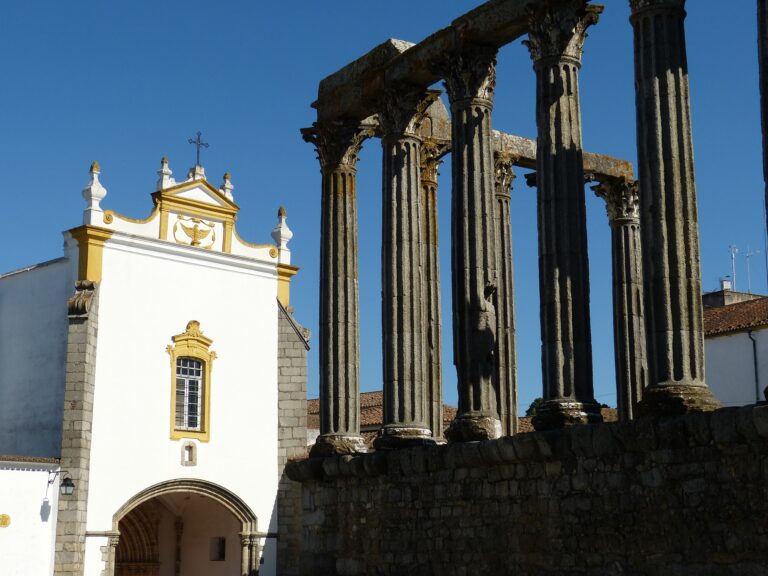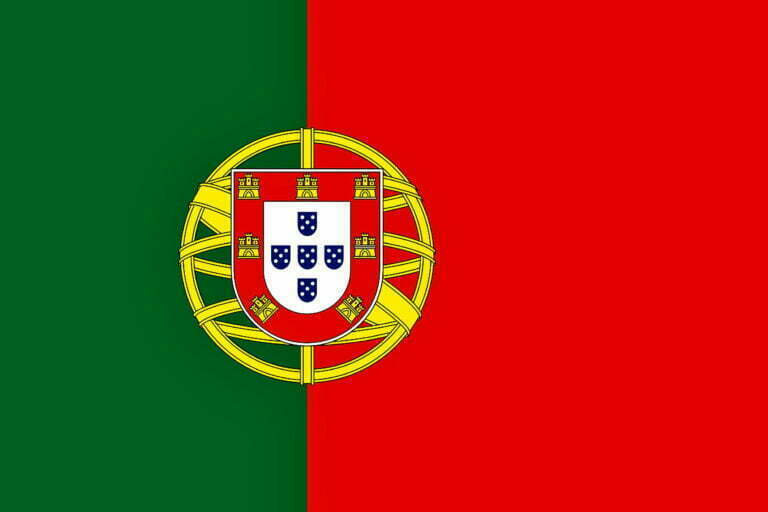Convent of Christ in Tomar is located on the Nabao River, a tributary of the Zêzere, northeast of Lisbon, central Portugal, and was a UNESCO World Heritage Site from 1983 onwards.
Convent of Christ in Tomar
Tomar’s cityscape is dominated to the west by the huge architectural complex of the Convent of Christ, which rises on a hill. It is an important part of the city’s identity, which has been preserved. The walls of the Castle of Tomar encircle the convent.
It was created in 1160 by Gualdim Pais, grand master of the Knights Templar, and belonged to the Order of the Templars. It was constructed over the course of five centuries. The Convent of Christ is a testament to a style that combines aspects of Romanesque, Gothic, Manueline, Renaissance, Mannerist, and Baroque architecture. The Oratory of the Templars, built in the 12th century and inspired by Jerusalem’s Holy Sepulchre Rotunda, is the Convent’s focal point.
Gualdim Pais, the first great master of the Templars, designed it with a polygonal ground plan of 16 bays, featuring an octagonal choir with an ambulatory. This is a classic “rotonda” of Templar architecture, of which just a few specimens remain in Europe.
Castelo de Tomar Portugal
The monastery became the residence of the Order of Christ in Portugal in 1356, and the ornamentation of the rotunda displays the Order’s richness. The paintings and frescoes primarily represent biblical subjects from the 16th century. Its mosaics, as well as the golden statues beneath the Byzantine dome, have been meticulously repaired. When it was erected, an arcade joined the Manueline church to the rotunda.
The sacristy, the cemetery and laundry cloisters, the infirmary, the Knights’ hall, and the pharmacy are located to the north and east. Cloisters were erected at various times. The burial cloister was built to the north-east of the rotunda in about 1430 by Infante Don Henrique.
Tomar Castle Portugal
Using pointed arches in a sober, exquisite Gothic style. The Manueline impact was decisive and persuasive, as it had been everywhere. Diego de Arruda was commissioned by King Manuel to build the massive choir on a square layout with a tribune built above the chapter-house.
Two notable bays highlight the elevation of these two storeys on the outside. A window and an oculus incorporate Gothic and Moorish elements. As a result, the most accomplished embodiment of the Manueline ornamental style is provided.
During the reign of King D. Joao III (1521–1557), major alterations were made to display the Order’s dominance via expensive Manueline embellishments. Joao de Castilho built additional cloisters and religious structures during Joao III’s reign. He who was attentive to Italian influence in Tomar as well as Belém.
The cloister of the “Philips,” the main cloister, was renovated by Diego de Torralva in the second part of the 16th century. A Serlian or Palladian arrangement of two floors of Corinthian and Tuscan columns gives the façade their rhythm. Originally intended to serve as a memorial to the Reconquest.
The Convent of the Knights Templar of Tomar was transferred in 1344 to the Knights of the Order of Christ. It came to symbolize just the opposite during the Manueline period – the opening up of Portugal to other civilizations.
Convento de Cristo Tomar Portugal
The city is home to the Knights Templar’s 12th-century fortress and the Order of Christ, or Ordem de Cristo, convent, which was founded in 1314. It was crucial in the exploration of new worlds. A 16th-century church is another famous architectural specimen.
Joao de Castilho designed it in the Manueline style, combining Moorish and florid Gothic elements. Nossa Senhora da Conceicao, a Renaissance hermitage dedicated to Our Lady of the Immaculate Conception, was built in 1579.
In the 16th century, Henry the Navigator’s destroyed palace was repaired. Tomar is a major agricultural trading center for olive oil, wine, fruits, and vegetables, as well as a popular tourist destination.
Share to stand out from the crowd with this Blog.


